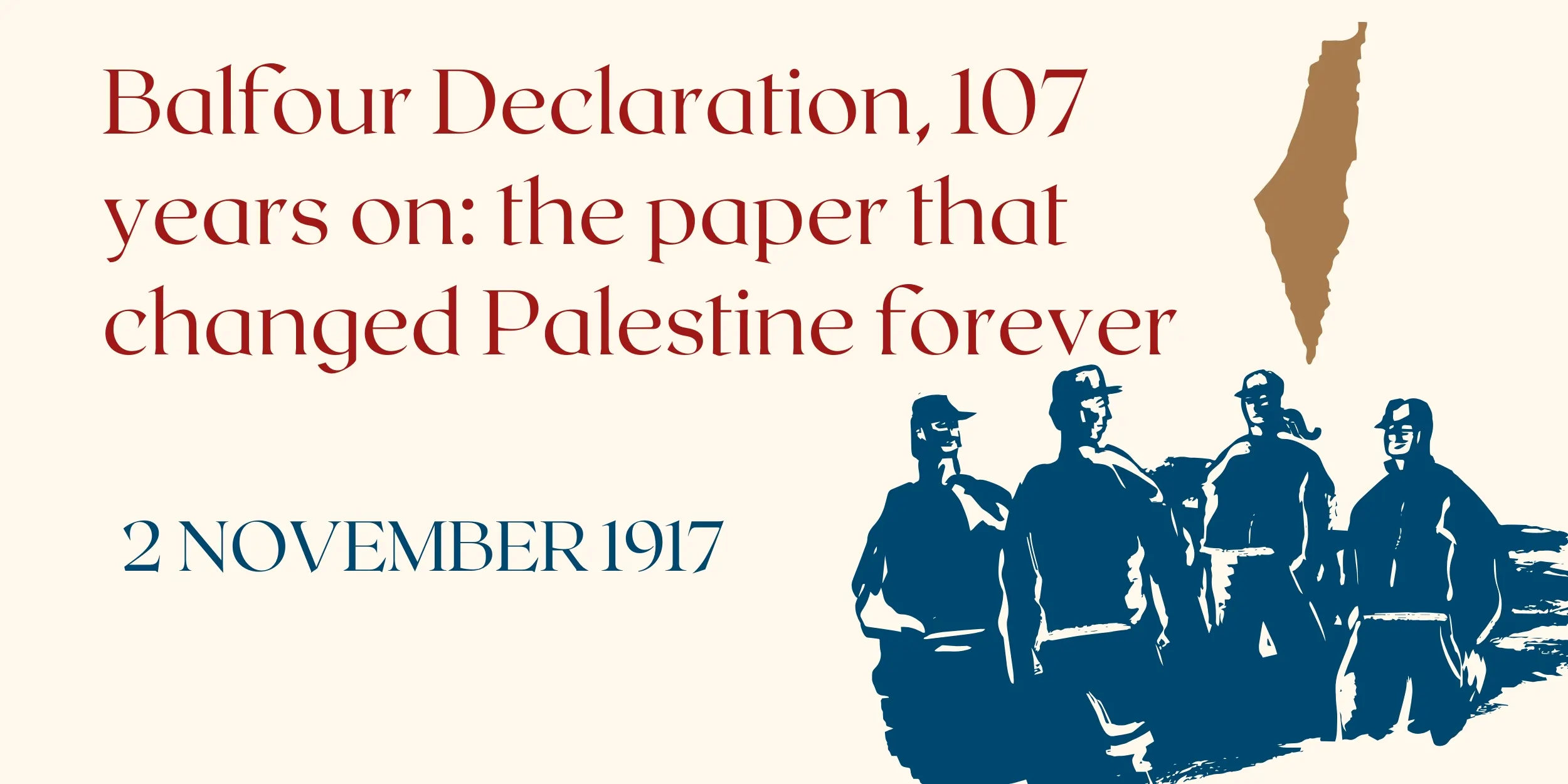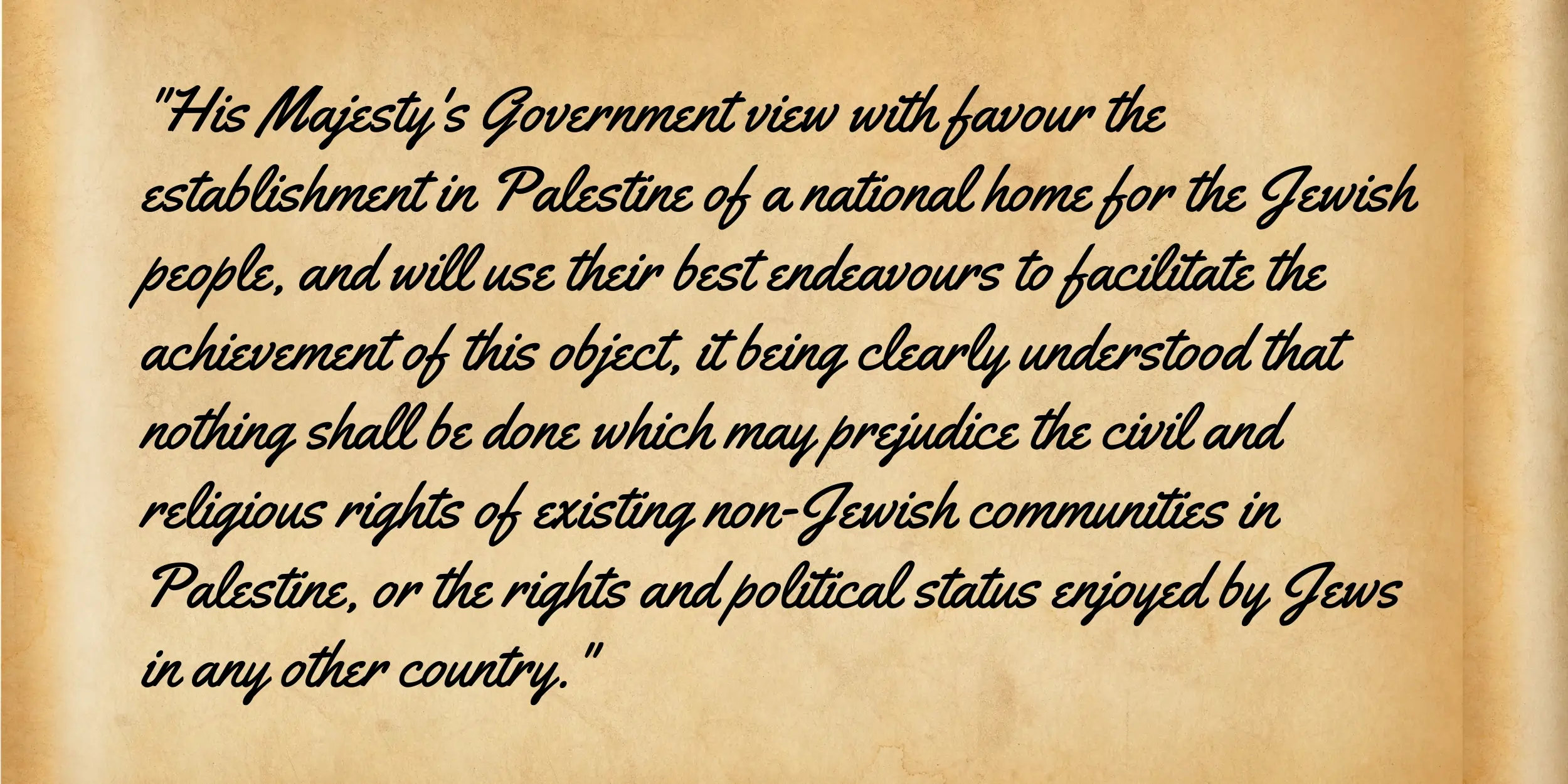
The Balfour declaration issued on 2 November 1917 created a turning point in the history of Palestine as well as the large region of the Middle East. This document comprises a single paragraph – that initiated a chain of developments altering the region’s map and having, potentially, an everlasting impact on the Israeli Palestinian confrontation. Still to this day, one can fully grasp the effect of this event even after 107 years.
Background and Context
Known as the Balfour Declaration, it was written by British Foreign Secretary Arthur Balfour to Lord Rothschild, the leader of the British Jewish group. They claimed that they didn’t want the emergence of a Jewish state in Palestine but stated that the British government was prepared to arrange a ‘national home for Jews’. This declaration was made in the event of the First World War a period characterized unprecedented in terms of geographical reorganization of power alliances.
At that time, the Ottoman Empire, which governed Palestine, was in disintegration; it teamed up with Germany. In an effort to increase British power in the Middle East, British leaders realized that by assisting Jews in establishing a Jewish home in Palestine, the Zionist movement might persuade Jews to back Britain and its allies in America and Russia.
The content of the Balfour Declaration
The Balfour Declaration indeed was short yet it was greatly holistic having world changing implications. It read:

This declaration acknowledged the aspirations of the Zionist movement while also attempting to address the concerns of the existing non-Jewish communities in Palestine. Yet, the general info sphere openness notion and the absence of a clear strategy of its adoption kept many questions unanswered.
Reactions and Consequences
The Balfour Declaration received considerable responses and caused various reactions in the groups of people. For Zionists it was a great triumph, for it brought about recognition for their aims of creating a national Jewish home. Jewish communities across the globe cheered such endorsement as a major move towards the realization of their dreams.
But, Arabs in the land of Palestine and other Arab countries received the declaration as a threat and not a welcoming call. Since they had long been subjected to political persecution, the Palestinians, who were once thought to make up the majority of the population of Palestine, were worried that the establishment of a Jewish national state would force them to leave their country and forfeit their political rights. To Arab leaders and intellectuals the declaration was a betrayal by the British who had assured them support for Arab independence in the region by the McMahon-Hussein correspondence.
The Mandate Period and rising tension
After World War I and the disintegration of the Ottoman Empire the British were granted control of Palestine by the League of Nations in 1920. The Balfour Declaration was in fact made part of the terms of the mandate, thus becoming a principle tool of British policy in this part of the world. During the mandate, many Jews moved to Palestine due to Zionists movements. This situation among Jewish immigrants resulted to increasing conflict between the two communities of Jewish and Arab. The rate at which each group insisted on nationalism led to conflict as did British colonialism strategies to the Jews and Arabs.
Road Map to Partition and Conflict
This led to unfavourable relations between Jews and Arabs in Palestine and provoked the Arab revolt of 1936-1939. About this time, the British came up with several solutions for the problem among them being to divide Palestine into two parts for the Jewish and the Arabs. These propositions were countered by both parties, and no compromise could be made.
It started getting worse after the Second World War where holocaust fostered a higher support for the establishment of an Israeli state. When the United Nations proposed to partition the British mandate in the Middle East in 1947, the organisation accepted by the Jewish Synagogue was turned down by the Arabs. When the plan was implemented by the UN General Assembly, the conflict continued and escalated, culminating in the British departure from Palestine in 1948.
The state of Israel was eventually declared on the 14/05/1948 by David Ben-Gurion. The next day other Arab countries invaded resulting to the first Arab Israeli war. It led to the displacement of Palestinian Arabs, an event termed the Nakba, or catastrophe and the drawing of the boundaries of Israel.
The Commemoration of the Balfour Declaration
The impact of the Balfour Declaration has a mixed bag legacy. To many Jews, it is indicative of a fundamental stage on the way to achieving their historical and national- Zionist dream. The creation of the State of Israel is seen as the realization of the aspirations sparked by the proclamation.
Yet, for Palestinians the Balfour Declaration represent the beginning of their displacement and the continuing plight for statehood. The non-Jewish populations in Palestine were not well protected by the declaration’s vision and its failure contributed to future extermination, expulsion, and suffering.
The conflict between Israelis and Palestinians is now over a hundred years old and many of its origins are rooted in the Balfour Declaration. The histories and grudges of both parties, Israeli and Palestinian, are dramatically reflected in the events which were initiated by this document.
Conclusion
It has been 107 years since the Balfour Declaration was declared; an historic decision to transform the fate of Palestine and the whole of the Middle Eastern region with a brief text. The declaration's promise to protect the rights of existing non-Jewish communities in Palestine was not adequately fulfilled, leading to decades of conflict, displacement, and suffering.
The current situation of the Palestine
Palestine currently faces escalating conflict, humanitarian crisis and political unrest. The hostilities between Israelis and Palestinians has remained a continued force in the Middle East for decades and remains an influential force in the lives of more than a country’s inhabitants. Here is an overview of the key aspects of the current situation:
On-going Conflict and Violence
The intensity in the fight between Israel and Palestine has increased over the years. The last large scale outbreak of violence took place in October 2023 when Hamas carried out a deadly attack on Israel which led to a string of Israeli’s airstrikes and ground invasion in the Gaza strip. The conflict has devastating impact on both factions and many Palestinian and Israelis have paid the price with their lives with thousands killed.
The conflict has also result to massive destruction of property within the Gaza strip most of the affected properties include homes, schools and health facilities. In Gaza more than 2 million people or over 85% of the population have become internally displaced. This has caused a problem in delivering humanitarian supplies to the target groups that have caused intense suffering.
Humanitarian Crisis
Palestinians poverty index is one of the highest in the whole world, and the living standards low. The United Nations and all other international tendering organizations too have appealed to cease the bloodshed and save the people. The current situation in Gaza, a territory under besiege for over 16 years, means that residents’ mobility and the importation of all the necessities like food, medicine and water is limited.
Today Gaza’s healthcare system is depleted and many facilities are in a poor state, including hospitals. There remained a severe dearth of medical merchandise and apparatus to attend to the injured people in the conflict. The above problem is worsened by the high population of internally displaced persons who occupy most of the inadequate shelters like congested and unhygienic camps.
Political Instability
Political instability is also significantly eminent in the Palestine area. Although the Palestinian Authority, which runs some areas of the West Bank, used to be a powerful organisation it is now divided and lacks support from other countries. The ruling party in Gaza strip called the Hamas movement is regarded as a terror group by most world powers like the United States and countries in the European Union. This has resulted in international condemnation and no support to the Palestinian leadership making it even harder for them to negotiate for a peaceful solution for the conflict.
International Response
Internationally the community has been felt divided mostly in reacting to the conflict. While some states have demanded that the violence should stop and civilians should be protected, the other states persisted with supporting Israel’s right to defend itself. The UN has over the years urged its peacekeepers to intervene and call for cease fire and protection of non-combatant persons but the pleas have been ignored.
Attempts to intervene in order to find a cease fire and deliver Humanitarian assistance have proven futile due to the continued fighting as well as cooperation from none of the factions involved. The United States, being an ally to Israel has been involved in the conflict and has tried in vain to find a lasting solution.